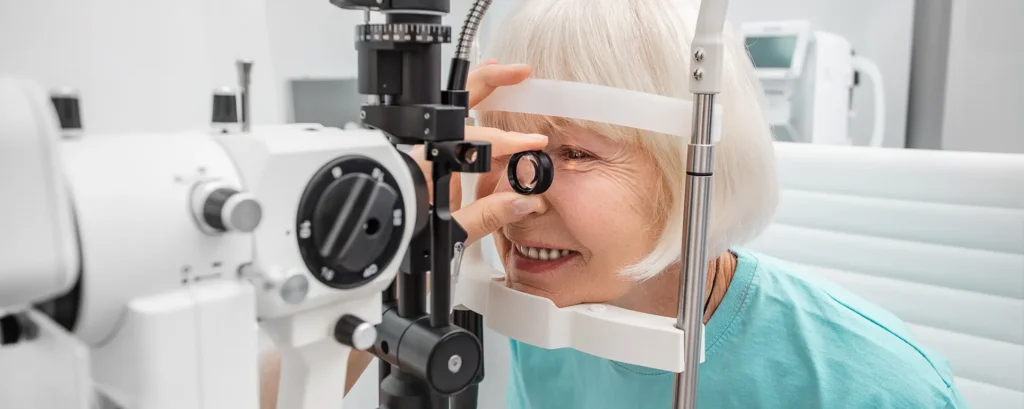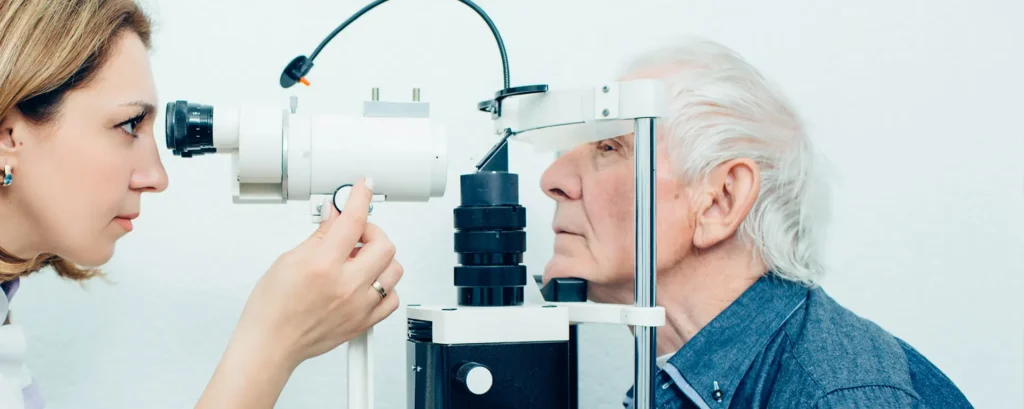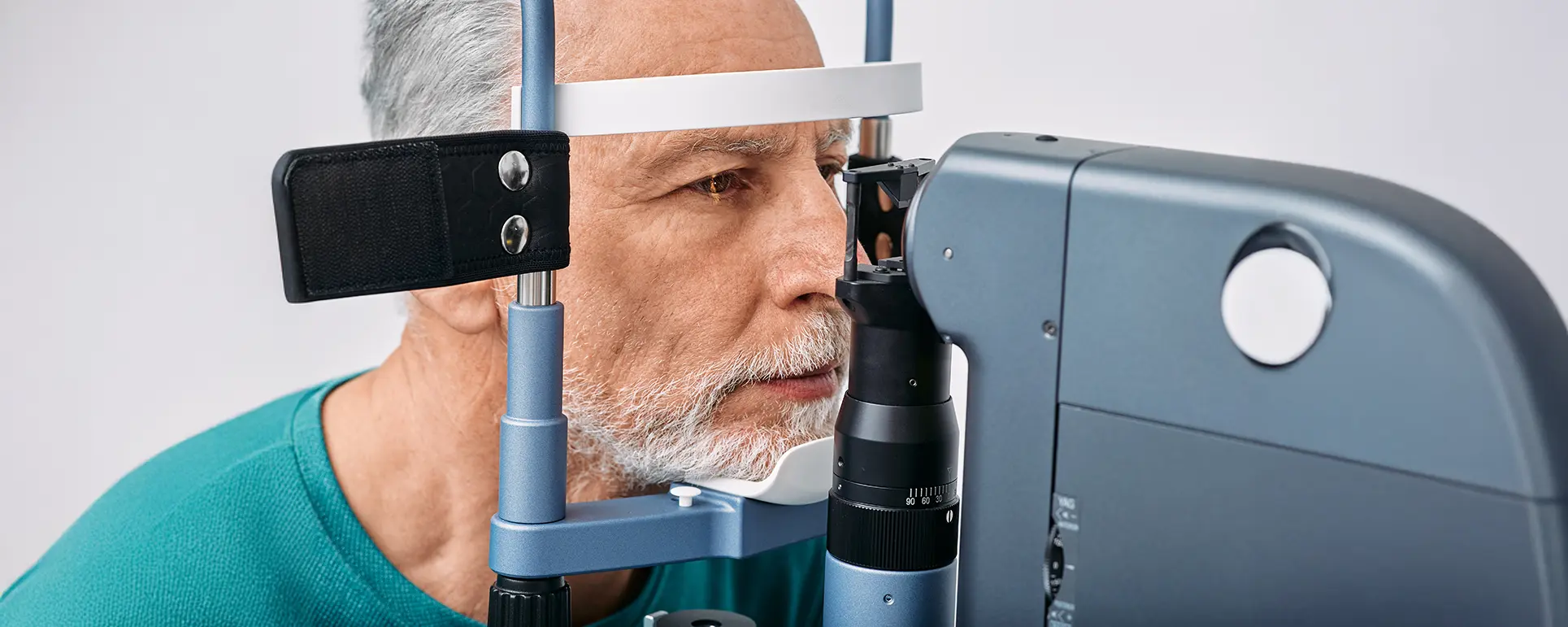If you’ve already had a YAG laser capsulotomy, you were probably told that the cloudy “secondary cataract” would be gone for good. For the vast majority of people, that’s true – the laser makes a permanent opening in the capsule and vision clears straight away. But sometimes, a little cloudiness can creep back or not quite clear in the first place, leaving you wondering whether a second YAG laser treatment might be on the cards.
This can sound worrying, especially when you were reassured that the first laser session was usually a one-off. The good news is that repeat YAG procedures are rare, safe, and generally straightforward. If you are ever told you need another one, it doesn’t mean anything went wrong with your first treatment or that your eyes are at risk. It usually just reflects how the eye heals or how the laser opening was made the first time.
In this guide, we’ll look in detail at what happens if you do need a second YAG laser treatment. We’ll talk about why it happens, how common it really is, what the procedure involves, and whether it changes your long-term outlook. By the end, you should feel reassured that even in the rare cases where a second treatment is required, the outcome is still overwhelmingly positive.
Why YAG Laser Treatment Is Usually a One-Time Procedure
The reason most people never need a second laser session lies in how the procedure works. When you had cataract surgery, the cloudy natural lens of your eye was removed but the thin capsule that holds the lens was left in place. This capsule supports your new artificial lens (IOL) but can become cloudy over time – this is what doctors call posterior capsule opacification, or PCO.
The YAG laser creates a clear opening in the middle of that capsule, instantly restoring a clear path for light. Once the opening has been made, it stays there permanently because the capsule doesn’t regrow or close over again. That’s why most surgeons describe the treatment as a once-only solution.
However, the eye is a living organ and healing patterns vary. Sometimes, the edges of the opening can shrink or become hazy. In other cases, the initial laser treatment may have created a smaller-than-ideal opening, particularly if the surgeon wanted to be extra cautious around the artificial lens. In those scenarios, a follow-up session might be recommended.
How Often Is a Second YAG Treatment Needed?

You’ll be relieved to know that the need for repeat treatment is uncommon. Most large studies report that over 95% of patients only ever need one YAG laser capsulotomy. The small percentage who do return for a second session often have very mild clouding that didn’t fully clear or which re-developed at the edge of the opening months or years later.
It’s also worth remembering that cataract surgery itself has become so refined that modern lenses sit very stably in the capsule. This stability means the YAG laser opening can be placed precisely where it needs to be. That has helped reduce the already low rates of repeat procedures even further compared to older techniques.
So, if your surgeon says you need another treatment, it puts you in a small minority. While that might sound unsettling, being in that minority doesn’t mean you’re unlucky – it just reflects natural differences in how eyes respond.
Why Might You Need a Second YAG Laser Treatment?
There are a few main reasons:
- Incomplete clearing of the capsule – If the opening created was smaller than ideal, or if some strands of capsule tissue remained, you might still notice glare or blurring. A second treatment can enlarge or tidy up the opening.
- Regrowth at the edges – Occasionally, epithelial cells in the capsule continue to grow around the rim of the laser hole. This doesn’t mean the capsule has closed over again, but it can make the opening less effective at letting in light.
- Shifts in lens position – Very rarely, if the artificial lens moves slightly, the laser opening may no longer be perfectly centred in your visual axis. A second session can reposition or widen the window.
- Conservative first treatment – Some surgeons deliberately make a smaller initial opening to reduce the risk of floaters or glare. If symptoms persist, they may enlarge it later.
What the Second Procedure Involves
If you’ve had the first YAG capsulotomy, the idea of going through it all again might not thrill you. But the second treatment is just as quick, painless, and safe as the first. The setup is identical: you’ll have dilating drops, sit at the laser machine, and hear a few clicks of light as the surgeon applies the pulses.
The only difference is that the surgeon will be targeting the existing opening, either enlarging it or clearing extra tissue. Because the capsule is already thinned in that spot, the second treatment is usually even faster. Most people are in and out of the laser room within minutes.
Recovery is the same, too. You might notice floaters straight afterwards and your vision may be slightly blurry for a few hours, but most people are back to normal by the next day.
Does a Second YAG Treatment Affect Long-Term Vision?
One of the biggest concerns people have is whether needing another treatment will harm their sight in the long run. The reassuring answer is no. Once the cloudy capsule has been cleared effectively, whether it took one or two sessions, the result is the same – a permanent, clear path for light.
Studies show that visual outcomes after repeat YAG laser sessions are just as good as after a single treatment. There is no evidence that having two procedures increases the risk of later complications such as retinal detachment or glaucoma, provided they are carried out carefully.
The key is that both sessions are performed with precision. With modern laser machines and experienced surgeons, the risks remain very low.
Are There Extra Risks with a Second Session?

Every medical procedure has risks, and YAG capsulotomy is no exception. The known risks include temporary floaters, a mild spike in eye pressure, and, very rarely, damage to the lens or retina.
The good news is that having a second treatment doesn’t really add to these risks. Because the laser is targeting tissue that has already been opened, the extra pulses are usually few and focused. Surgeons take care to avoid hitting the artificial lens, and they’ll monitor your eye pressure afterwards just as they did the first time.
So, while you may be more anxious about a repeat procedure, in reality the safety profile is very similar.
How Soon After the First YAG Might You Need Another?
This can vary. Some people are told within weeks that the opening wasn’t quite large enough and a touch-up is suggested straight away. Others enjoy clear vision for months or years before noticing new haziness. In those cases, the capsule has thickened again at the edges of the laser hole.
There isn’t a strict time frame – the need for a second treatment depends entirely on your symptoms and what the surgeon sees when examining your capsule. The important thing is to mention any return of blurriness or glare so it can be checked promptly.
Will You Still Need Glasses After a Second YAG?
Just like the first laser session, a repeat procedure only clears the capsule – it doesn’t change your underlying prescription. If you needed glasses for reading or distance before, you’ll probably still need them afterwards. The goal is to restore the clarity of your vision to what it was just after cataract surgery, not to make you spectacle-free.
That said, if the cloudy capsule was blurring your sight, you may find your glasses feel more effective once the opening is enlarged.
How to Tell If Your Vision Problems Are Capsule Related
One worry many people have is whether their symptoms are due to capsule clouding or some other eye problem. Not every bit of blur after cataract surgery is caused by PCO.
Signs that suggest the capsule is the culprit include haziness that builds gradually, more glare around lights, and the sense that your cataract has “come back.” An eye exam with a slit lamp lets the surgeon see directly whether the capsule is cloudy and whether the existing laser opening is adequate.
If the capsule looks clear and your vision problems are from something else – like macular degeneration, glaucoma, or dry eyes – then a second YAG won’t help. That’s why a careful examination is essential before going ahead.
Living With the Possibility of a Second Treatment
Most people walk away from their YAG capsulotomy with a permanent solution, and that’s likely to be your story too. But knowing that a tiny percentage of patients do need a second session can save you worry if your surgeon mentions it.
Think of it less as something having “failed” and more as fine-tuning. The first procedure has already done most of the work; the second is just finishing the job. Once complete, your chances of ever needing another are virtually nil.
FAQs
1. How common is it to need a second YAG laser treatment?
A second YAG laser capsulotomy is not something most patients will ever experience. Studies consistently show that well over 95% of people have only one treatment and never require another. The small minority who do may have residual capsule tissue left behind, regrowth at the edge of the laser opening, or simply a smaller hole that needs enlarging. So while it’s possible, it is by no means the norm and should be seen as a routine touch-up rather than a major concern.
2. Does needing a second treatment mean the first one failed?
No, needing a second session does not mean that your first treatment failed. In almost all cases, the initial YAG procedure successfully cleared the capsule and improved vision. What often happens is that the surgeon may have deliberately created a smaller opening at first, or some capsule tissue later thickened at the edges. A repeat treatment is more about fine-tuning or completing the process rather than correcting a mistake.
3. Is the second procedure different from the first?
The second treatment is essentially the same as the first. You’ll have dilating drops to make it easier for the surgeon to see the capsule, then you’ll sit at the laser machine for a few minutes while the doctor applies precise laser pulses. The main difference is that the surgeon will be focusing on an existing opening rather than creating a brand-new one. Because of this, many patients find the second treatment feels even quicker than the first.
4. Will the second treatment take longer to recover from?
Recovery after a repeat YAG laser capsulotomy is very similar to the first time. Your vision may be a little blurry for a few hours, and floaters can appear as small capsule fragments move around inside the eye. However, most people find that their vision settles by the next day and that the improvements are immediate once the capsule is fully cleared. There is no evidence that recovery is slower or more complicated the second time around.
5. Are the risks higher the second time round?
The risks of a second YAG treatment are no greater than those of the first. As with any laser capsulotomy, there is a small chance of temporary floaters, a short-lived increase in eye pressure, or very rare complications like damage to the artificial lens or retina. Since the surgeon is often working on an area that has already been thinned, fewer laser pulses are usually required, which helps keep the risk profile just as low as before.
6. How soon might I need a second treatment?
The timing varies from person to person. Some people are advised to have a follow-up just a few weeks after their first procedure if the initial laser opening was very conservative. Others may enjoy clear vision for years before noticing fresh cloudiness as the capsule thickens at the edges. The important point is that there is no set time frame – a second treatment is only done if your symptoms and examination findings show it is necessary.
7. Can a second YAG treatment improve my glasses prescription?
A repeat YAG laser capsulotomy does not change your glasses prescription. What it does is restore clarity to your vision, making your existing prescription work as effectively as possible. Many patients who felt their glasses were no longer helping suddenly find that they can see much better with them again once the cloudy capsule is fully cleared. The procedure is about removing haze, not altering refractive error.
8. What if my vision problems aren’t from the capsule?
Not every case of blurred or hazy vision after cataract surgery is caused by the capsule. Other eye conditions such as macular degeneration, glaucoma, or even dry eye disease can produce similar symptoms. That’s why your ophthalmologist will carefully examine your eyes before recommending another laser treatment. If your capsule is clear and the problem lies elsewhere, a second YAG won’t help, and the focus will shift to treating the underlying cause instead.
9. Will I ever need a third treatment?
Once a second YAG treatment has been performed and the capsule fully opened, the chances of ever needing a third are vanishingly small. The capsule cannot regrow in the centre once it has been adequately cleared, and there is no biological mechanism for it to “close up” again. In other words, two sessions is usually the absolute maximum, and in most cases even that isn’t necessary.
10. Should I be worried if I’m told I need a second treatment?
There is no need to feel alarmed if your surgeon suggests another YAG laser capsulotomy. While it may come as a surprise, it simply means that the opening in your capsule needs a little extra adjustment. The procedure is just as safe, quick, and effective as the first, and once it’s done, your vision is expected to remain clear for the long term. Think of it as finishing the job rather than redoing it.
Final Thoughts
Needing a second YAG laser treatment is rare, but when it happens it’s usually a very minor, easily fixed issue. The procedure is as safe and straightforward as the first time, and long-term vision outcomes are just as good. So if your surgeon suggests another session, you can take comfort in knowing it’s simply a matter of polishing up the results, not a sign that anything serious has gone wrong.
To learn more or to discuss your own treatment options, you can get in touch with us at London Cataract Centre.
References
- Moshirfar, M., Brown, A.H., Manion, G.N., Moin, K.A. and Hoopes, P.C. (2024) ‘Recurrent posterior capsular opacification in adults: a case report and an overview of literature’, International Medical Case Reports Journal, 17, pp. 683–693. Available at: https://pubmed.ncbi.nlm.nih.gov/39071183/ (Accessed 29 August 2025).
- Jayaram, H., Aslam, T.M., Dhillon, B. and Wright, A. (2005) ‘YAG curios #1: repeat Nd:YAG laser posterior capsulotomy’, Acta Ophthalmologica Scandinavica, 83(2), pp. 242–244. Available at: https://pubmed.ncbi.nlm.nih.gov/15799741/ (Accessed 29 August 2025).
- Dot, C., Guigou, S., Baillif, S., et al. (2023) ‘Incidence of retinal detachment, macular edema, and ocular hypertension after Nd:YAG capsulotomy: a nationwide French study’, Ophthalmology, 130(6), pp. 640–649. Available at: https://pubmed.ncbi.nlm.nih.gov/36581227/ (Accessed 29 August 2025).
- Shetty, N.K. and Sridhar, S. (2016) ‘Study of variation in intraocular pressure spike (IOP) following Nd:YAG laser capsulotomy’, Journal of Clinical and Diagnostic Research, 10(12), pp. NC09–NC12. Available at: https://pmc.ncbi.nlm.nih.gov/articles/PMC5296472/ (Accessed 29 August 2025).
- Ling, R., Kam, J., Cole, C.J., et al. (2020) ‘Evaluation of Nd:YAG laser capsulotomy rates in a real-world clinical study of CT Lucia 611P’, Clinical Ophthalmology, 14, pp. 3687–3693. Available at: https://pmc.ncbi.nlm.nih.gov/articles/PMC7569058/ (Accessed 29 August 2025).

